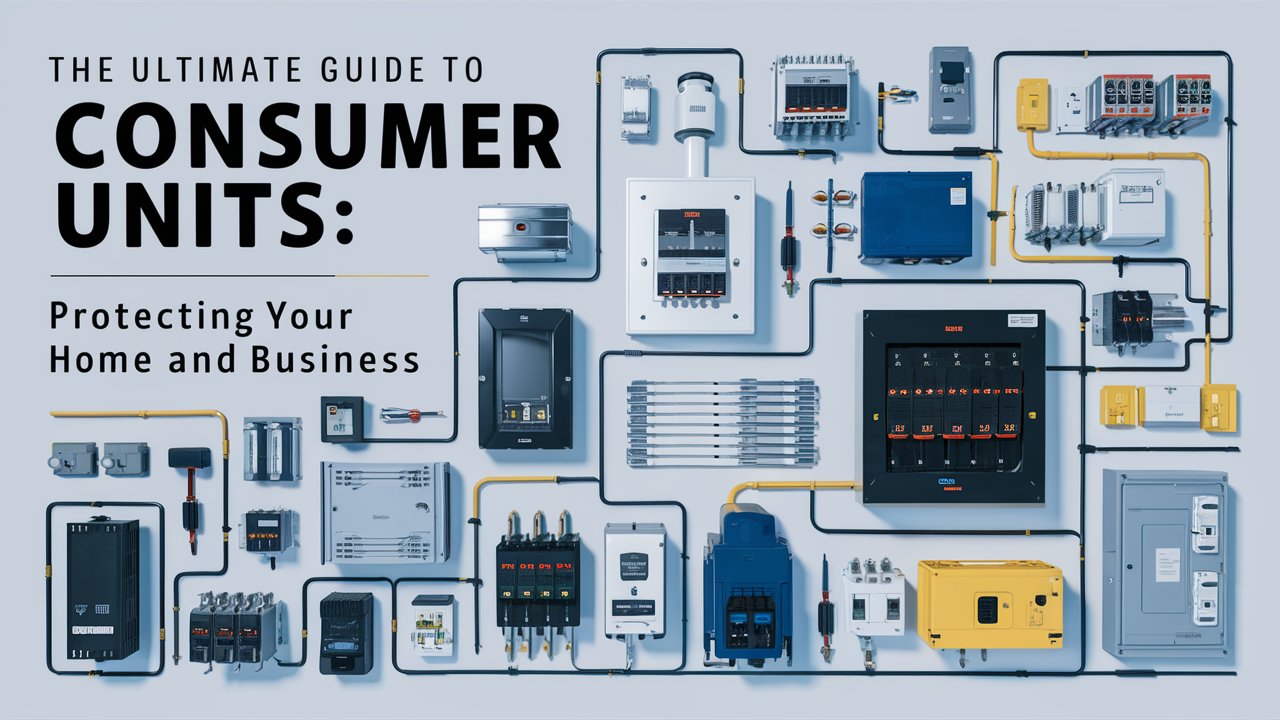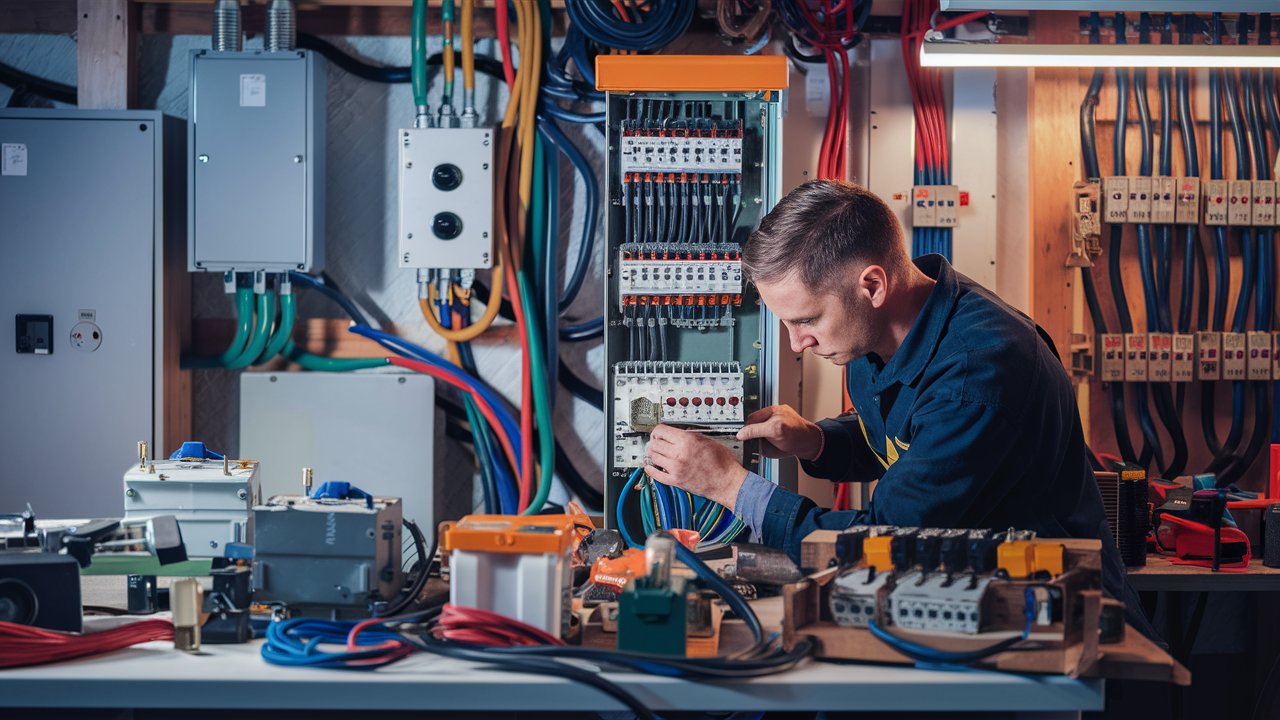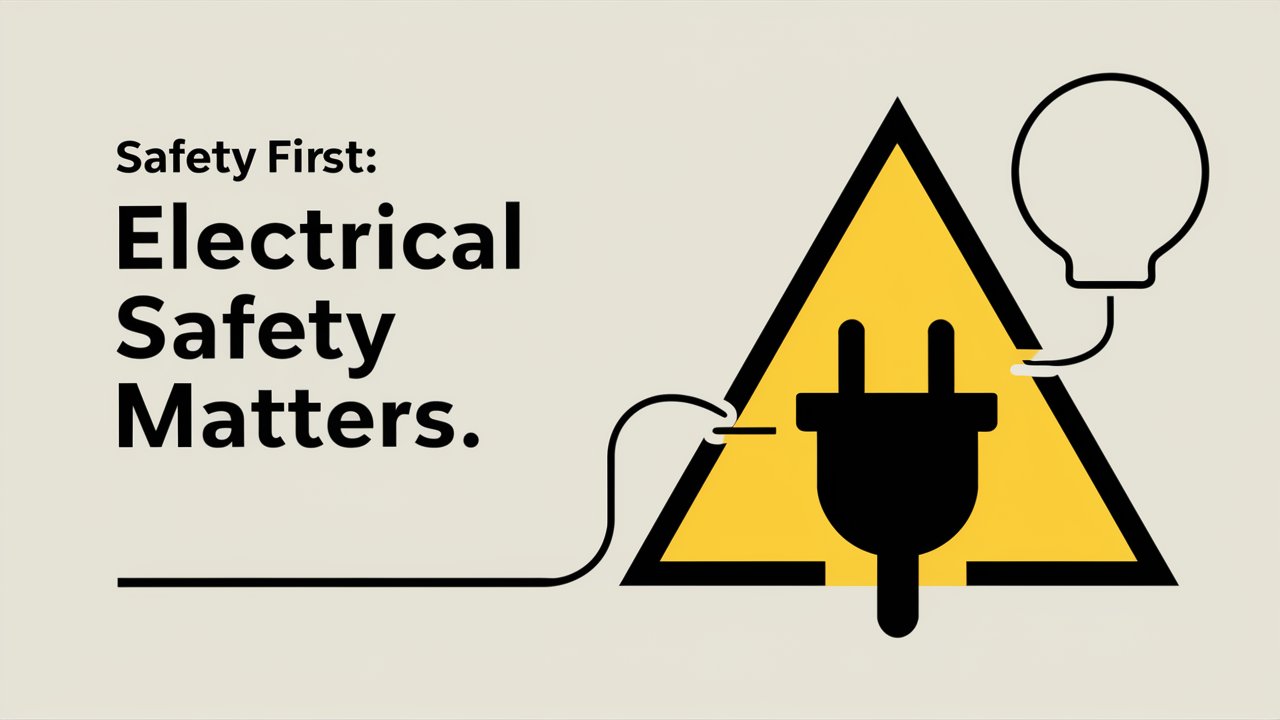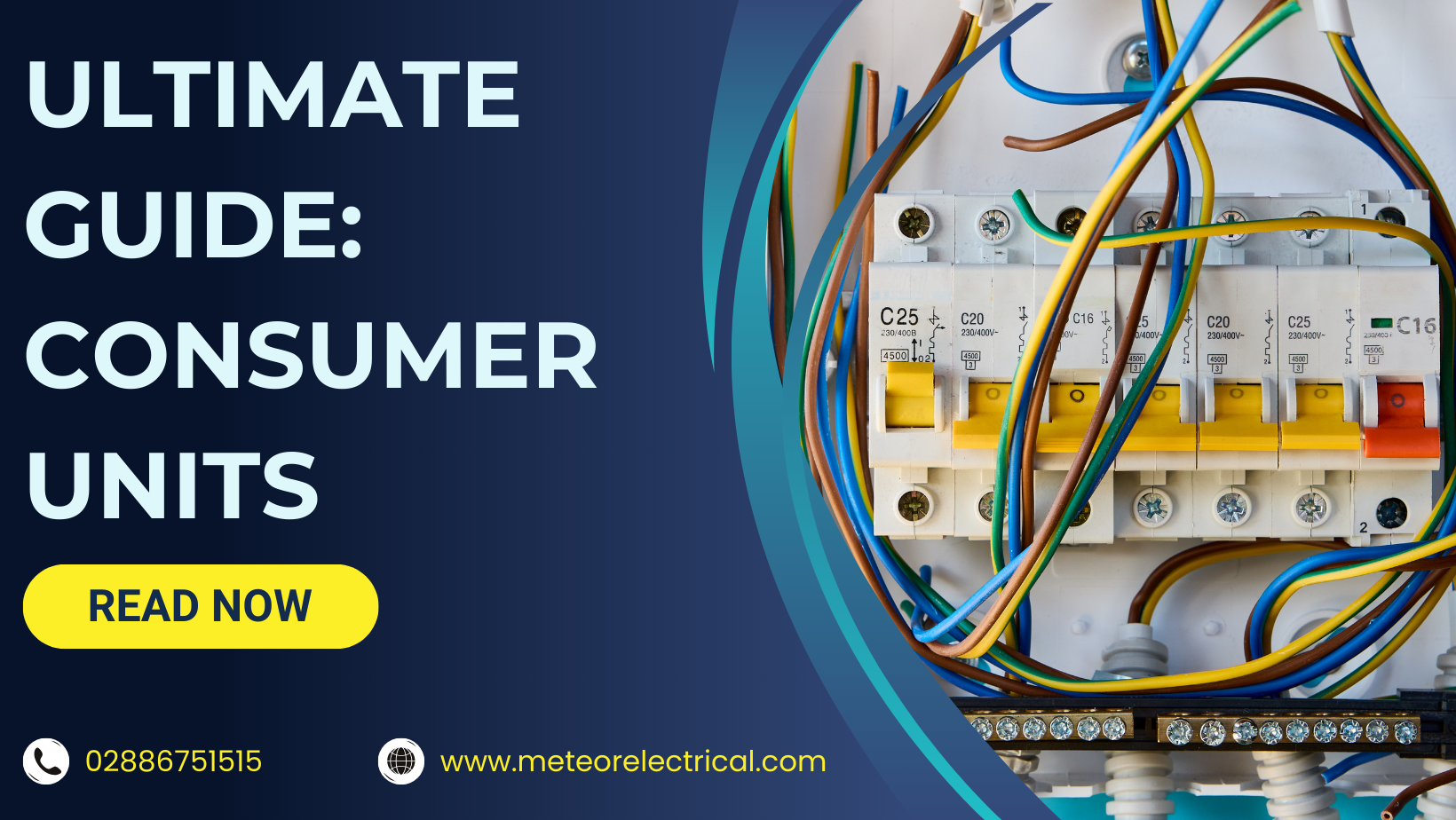The Ultimate Guide to Consumer Units: Protecting Your Home and Business

Have you ever wondered what a consumer unit is? This essential device, often called a fuse box, is the most critical electrical appliance in your home or business. Its primary role is to protect your electrical appliances from damage and shield you from electrical shocks. A consumer unit is composed of critical components like a mains switch, residual current devices (RCDs), and circuit breakers, which together ensure the safety and efficiency of your electrical system. In this blog, we'll explain what a consumer unit does, why it's essential, and how it keeps your environment safe.
Let’s get started!
What is a Consumer Unit?
A consumer unit, often known as a fuse box, is the nerve centre of your home's or business's electrical system. Its primary role is to protect electrical appliances from damage and to prevent electrical shocks to humans (Electrical Safety First). Inside, it comprises essential components such as a mains switch, residual current devices (RCDs), and circuit breakers, all working together to manage and distribute electricity safely throughout your property.
Components of a Consumer Unit
A consumer unit is the backbone of your home's electrical system. Understanding its key components can help you appreciate its role in maintaining electrical safety and efficiency. Here’s a closer look at the essential components:
Main Switch:
The main switch is the gateway of your consumer unit, controlling the flow of electricity to the entire system. In the event of an emergency, such as a fire or electrical fault, you can quickly turn off all power to your home or business by flipping this switch. It's crucial for maintaining control and safety over your electrical supply.
RCD (Residual Current Device):
The RCD is a life-saver, quite literally. This device monitors the electrical current flowing through your circuits. If it detects an imbalance, which could be caused by a person touching a live wire, it immediately breaks the circuit. By doing so, it protects against electric shocks, making it an essential component for any modern consumer unit.
MCB (Miniature Circuit Breaker):
MCBs are the guardians of individual circuits within your consumer unit (Electrical 4U). Each MCB is designed to protect a specific circuit from overload and short circuits. For instance, if you have too many appliances running on a single circuit, the MCB will trip, cutting off the electricity to prevent overheating and potential fires. This ensures that each circuit operates within its safe capacity.
RCBO (Residual Current Breaker with Overcurrent Protection):
The RCBO is a versatile and advanced device that combines the functions of an RCD and an MCB. It offers comprehensive protection by monitoring for both residual current (to prevent electric shocks) and overcurrent (to prevent overloads and short circuits). This dual functionality makes RCBOs particularly valuable in providing enhanced safety and reliability for your electrical system.
A consumer unit incorporates these components to ensure that your electrical system is safe and efficient. Whether you're upgrading your current setup or installing a new one, understanding these components can help you make informed decisions to protect your home or business.
Want a closer look at your consumer unit? Watch this video!
Credit: The Engineering Mindset
Types of Consumer Units
Consumer units come in various types, each suited for different needs and regulations. Here are some common ones:
High Integrity Consumer Units
High-integrity consumer units feature three neutral bars, allowing the use of two RCDs and a bank of RCBOs (Residual Current Breaker with Overcurrent Protection). This setup ensures that non-essential circuits like lighting are on RCDs, while mission-critical circuits are protected by RCBOs, minimising the risk of nuisance tripping.
Split Load Consumer Units
Split-load consumer units are designed with a mains switch and an RCD, perfect for compliance with modern electrical regulations. This configuration helps to protect circuits against leakage while reducing the risk of unnecessary power outages. Need to know how to wire a split-load consumer unit? Here's a helpful video to get you started.
Safety First: Follow necessary safety precautions before wiring a consumer unit, and consult with a qualified electrician whenever necessary.
Credit: About Electricity
Garage Consumer Units
Garage consumer units are compact, specialised devices designed for environments with a limited number of circuits, such as garages, sheds, and workshops. These units are typically smaller, ranging from two to five ways, making them perfect for spaces that don't require the extensive circuitry of a full-sized consumer unit.
Despite their size, garage consumer units are robust and reliable, providing the same level of protection and efficiency as their larger counterparts. Installing a dedicated garage consumer unit ensures that your tools, lighting, and other electrical equipment operate safely and efficiently.
By isolating the electrical system in your garage or workshop, you can prevent potential overloads and ensure that any issues are contained, minimising risks to your main electrical system. Whether you're a DIY enthusiast or a professional tradesperson, a garage consumer unit is an essential component for maintaining a safe and functional workspace.
Here’s a great video showing you how to wire a garage consumer unit.
Credit: About Electricity
Choosing the Right Consumer Unit
Selecting the appropriate consumer unit is crucial for the safety and efficiency of your electrical system. Here's what to consider when making your choice:
Load Capacity:
Assess the electrical load your consumer unit will need to handle. For a standard home, a split-load consumer unit might be adequate, providing a balance of safety and functionality by separating circuits that require RCD protection from those that don’t.
However, for larger commercial buildings, a three-phase distribution board is essential to manage higher power demands efficiently. This ensures your system can handle multiple heavy-duty appliances without risk of overload.
Type of Installation:
Consider the environment where the consumer unit will be installed.
Residential installations typically require compact units designed for smaller loads, whereas commercial and industrial settings demand more robust systems to handle higher and more varied electrical demands. For instance, garage consumer units are ideal for smaller, specific environments like garages, sheds, and workshops, where only a limited number of circuits are needed.
Regulations and Standards:
Ensure the consumer unit complies with local electrical safety standards and regulations. This not only guarantees safety but also ensures legal compliance, which is critical during property inspections and resale. Compliance with these standards helps prevent electrical hazards and potential legal issues.
Installation and Safety Tips

Professional Installation:
Always hire a qualified electrician for the installation of your consumer unit. A professional will ensure that the unit is installed correctly and in compliance with safety standards, avoiding the risks associated with improper installation. This also preserves the validity of any warranties and provides peace of mind.
Regular Maintenance:
Schedule regular inspections and maintenance of your consumer unit. Regular checks can help identify signs of wear, loose connections, and ensure the proper operation of safety devices like RCDs and MCBs. Keeping your unit in top condition can prevent electrical failures and extend the lifespan of your system.
Understanding Electrical Load:
Be aware of the electrical load your property demands. Overloading circuits can lead to electrical fires and damage to appliances. Use appropriate circuit breakers and fuses that match your load requirements. Understanding and managing your load capacity can prevent unnecessary tripping of circuit breakers and ensure a smooth, uninterrupted power supply.
By carefully considering these factors and maintaining your consumer unit, you can enhance the safety and efficiency of your electrical system, whether it’s for a home, commercial building, or a specialised environment like a garage or workshop.
Upgrading Your Consumer Unit
Over time, consumer units may require upgrades to comply with new regulations or accommodate increased electrical demands. An upgrade typically involves:
-
Detailed inspection of the current unit.
-
Safe isolation of the power supply.
-
Installation of the new unit.
-
Testing of all connections.
-
Re-energizing the unit and performing a final test.
-
Issuing a compliance certificate.
Electrical Consumer Unit Regulations

Understanding electrical consumer unit regulations is vital for safety and compliance in the UK and ROI. Here's what you need to know:
Mounting Regulations:
Consumer units must be conveniently accessible, mounted between 1350mm and 1450mm above the floor, away from young children.
UK Regulations:
Since the 17th Edition of the IET Wiring Regulations, all UK consumer units must be enclosed in non-combustible material or placed in a non-combustible cabinet. Metal consumer units help prevent overheating and contain fires for longer, reducing the risk of spread compared to plastic units. (IET Wiring Regulations)
ROI Regulations:
In the Republic of Ireland, consumer unit boards have specific regulations under I.S. 10101:
-
Must include a Double Pole Isolator Switch.
-
RCDs are mandatory to protect all luminaire circuits.
-
Surge Arrestors must be included, or a risk assessment explaining their exclusion.
-
Additional protection, like RCDs and overcurrent protective devices, is required for AC final circuits supplying luminaires in domestic premises. (I.S. 10101 Regulations)
Garo Solutions:
Garo offers consumer unit boards compliant with ROI regulations, including:
- 2 Row 7 Way Consumer Unit with Main B63 MCB (Type A)
- 2 Row 7 Way Consumer Unit with Main B63 MCB (Type B)
Here’s David Quigley (Garo’s Sales Engineer) giving you an overview of the two electrical consumer unit boards and the I.S. 1010 Regulations:
Find Your Consumer Unit at Meteor Electrical
Here’s a list of a range of products covering a wide variety of consumer units for every need.
|
Small Consumer Unit Range |
Large Consumer Unit Range |
|
|
|
|
|
Our Small Consumer Units Range
At Meteor Electrical, we stock small consumer units, from 2-way consumer units to 18-way consumers. Our range of small consumer units is suitable for domestic use and within garages and sheds.
Our Large Consumer Units Range
We also stock large electrical consumer units, from 20-way consumer units up to 75 ways, to suit the needs of your business or home. Our range of large consumer units is commonly used within commercial and residential environments. If you can’t find a consumer unit big enough for your project, check our TP&N distribution range. Learn about the 3-phase distribution board range here.
Consumer Unit Accessories
Consumer units are crucial devices that work well on their own, but once you add a few accessories, you can easily take these devices to the next level. Once you find your ideal consumer unit on Meteor Electrical, you can also check out our wide range of consumer unit accessories all under one roof.
Conclusion
Understanding consumer units and their maintenance is essential for the safety and efficiency of your electrical system. Whether you're choosing a new unit, maintaining an existing one, or planning an upgrade, knowing the different types and their functions will help you make informed decisions. For more information or to explore our range of consumer units, visit Meteor Electrical.
Relevant Reads:
- All You Need to Know about Consumer Units
- Understanding Residual Current Breaker with Over-Current (RCBOs)
- Fusebox and Consumer Units Explained
- All You Need to Know About Three Phase and Neutral (TP&N) Distribution Boards
Frequently Asked Questions
What is the difference between a consumer unit and a distribution board?
A consumer unit is a specific type of distribution board typically used in residential settings. In contrast, distribution boards vary in size and complexity and are used in commercial and industrial environments.
Can I have two electric showers in one house?
Yes, but careful planning is required to ensure the electrical system can handle the load. A qualified electrician should assess and possibly upgrade the consumer unit and wiring.
What are the different types of bathroom extractor fans?
Extractor fans differ based on their mounting type (wall, ceiling, window) and features like humidity sensors or timers. Choose one that meets the ventilation requirements of your bathroom.
What is IP rating, and why is it important?
IP (Ingress Protection) rating indicates the level of protection an electrical enclosure provides against dust and water. It is crucial for ensuring the suitability of electrical components in different environments.

